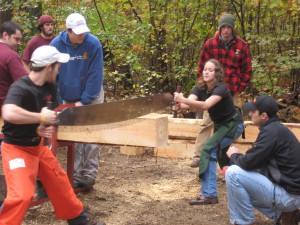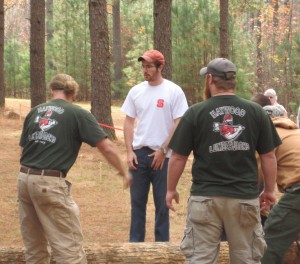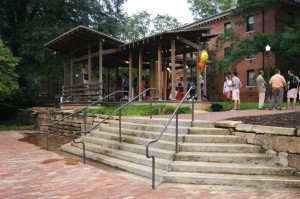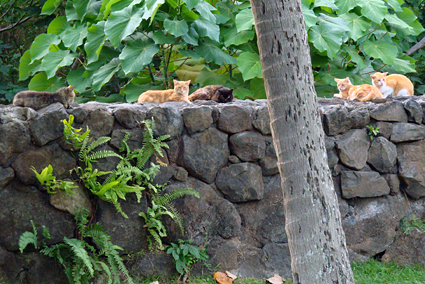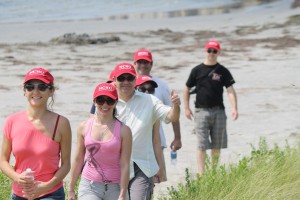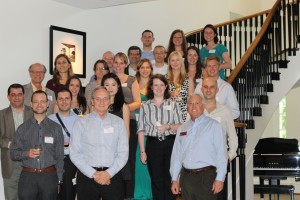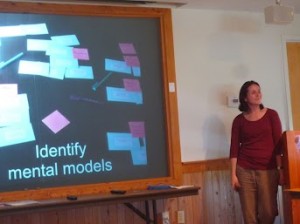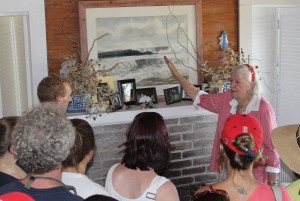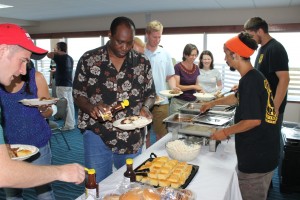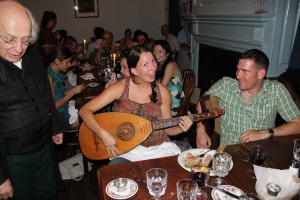On Saturday, November 17, North Carolina State University’s Forestry Club will host the 2012 Rolleo at Schenck Memorial Forest in Raleigh, NC. The NC State Forestry Club has a long tradition of organizing this fall forestry and timbersports competition to help sharpen their skills in preparation for Southern Forestry Conclave in the spring. Having just hosted the 2012 Southern Forestry Conclave on campus in March, the NC State Forestry Club is poised to put on the best ever Rolleo this year. This will be the third year that it will be held at Schenck Memorial Forest, which has been very popular because of its close proximity to NC State’s campus, great event staging, and ample parking (sorry, no dogs are allowed at Schenck Forest).
“We are excited to host Haywood Community College, Montgomery Community College, University of Tennessee, and Virginia Tech as our guests at Rolleo this year,” said Travis Howell, President of the NC State Forestry Club. “We are seeing a growing interest in joining the Forestry Club from NC State students and for competing at Rolleo from other schools,” he added.
That is largely due, no doubt, to the superb job they did hosting the 2012 Conclave and the tremendous showing that NC State students have had during the past few years in the STIHL TIMBERSPORTS Collegiate Series, which is aired on TV. Victor Wassack (’12 Forest Management) won the Southern Collegiate Championship in 2012, and Logan Scarborough (’10 Forest Management) took the 2010 Southern and National Collegiate Championship titles and is now pro status.
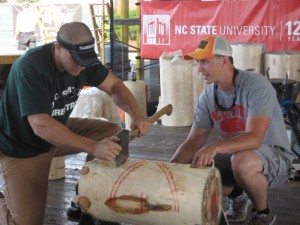
Logan Scarborough (left) and Victor Wassack behind the scenes at the 2012 STIHL TIMBERSPORTS Southern Qualifier hosted by NC State. Victor won the collegiate competition, giving much thanks to his friend and mentor, Logan, who competed as a Pro.
“We are very proud of Victor and Logan,” said the club’s faculty advisor, Dr. Joe Roise. “NC State is the home of timbersports champions, and our current students will be an exciting group to watch over the next few years, because they are very focused and cohesive.”
Rolleo pits the competing schools’ teams against each other in a variety of events. Academic/technical events include dendrology, timber volume estimation, photogrammetry and more. Physical events include archery, axe throw, cross-cut saw, underhand chop, and many other old-fashioned lumberjack skills.
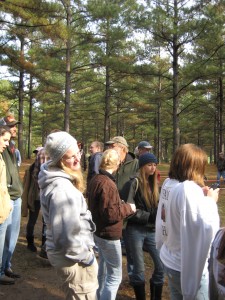 Rolleo is fun for contestants and spectators, alike. The Forestry Club invites all students, staff, faculty, alumni, friends and family to join in the fun! Academic/technical events will begin around 8:30am, followed by the physical events. There is no cost for attendance, but you can purchase a Rolleo T-Shirt onsite to help support the club. Lunch will be available for $3, and if you are staying for dinner and the awards ceremony that evening, you may purchase a catered dinner at cost (estimated at $8-$10). Please contact Travis Howell (tlhowell@ncsu.edu) if you are planning to stay for dinner so that he can notify the caterer. The club wishes to thank Signlogic of Elizabethtown for help with the t-shirts and alumnus Fred Hardin for his help in obtaining wood for the competition.
Rolleo is fun for contestants and spectators, alike. The Forestry Club invites all students, staff, faculty, alumni, friends and family to join in the fun! Academic/technical events will begin around 8:30am, followed by the physical events. There is no cost for attendance, but you can purchase a Rolleo T-Shirt onsite to help support the club. Lunch will be available for $3, and if you are staying for dinner and the awards ceremony that evening, you may purchase a catered dinner at cost (estimated at $8-$10). Please contact Travis Howell (tlhowell@ncsu.edu) if you are planning to stay for dinner so that he can notify the caterer. The club wishes to thank Signlogic of Elizabethtown for help with the t-shirts and alumnus Fred Hardin for his help in obtaining wood for the competition.
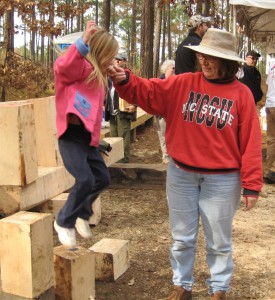 If you are an alum and wish to compete with other alumni at Rolleo, please contact Travis for more information. Whether competing or just watching, the Forestry Club hopes everyone will come out and support forestry, timbersports, and all of the contestants!
If you are an alum and wish to compete with other alumni at Rolleo, please contact Travis for more information. Whether competing or just watching, the Forestry Club hopes everyone will come out and support forestry, timbersports, and all of the contestants!
Location:
Schenck Memorial Forest Location on Google Maps
Carl Alwin Schenck Memorial Forest, Raleigh, North Carolina 27607
Media Contact: Travis Howell, NC State University Forestry Club President
Related Links:


